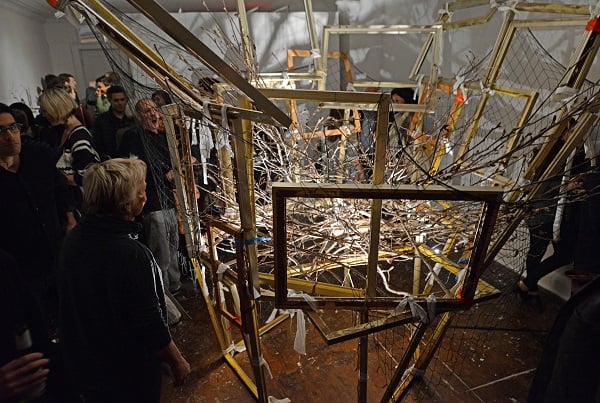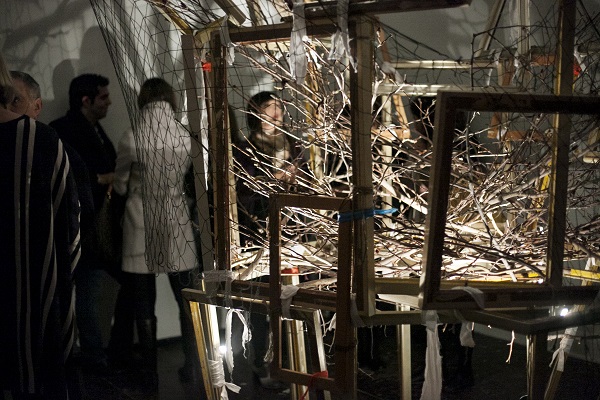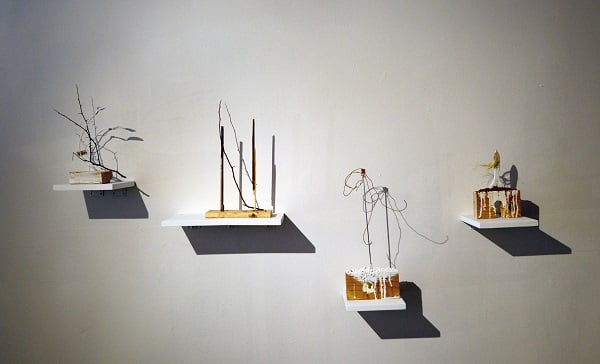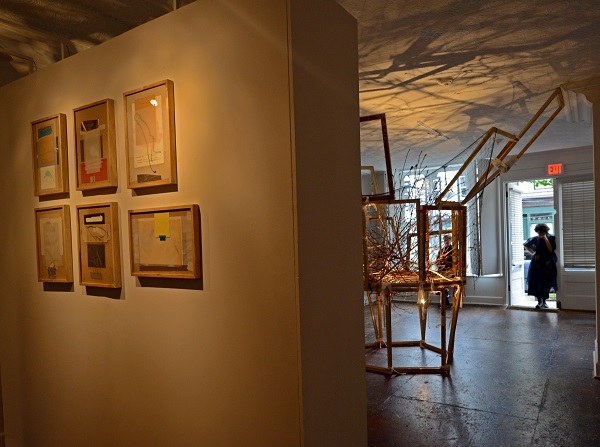Art & Exhibitions
Shaqayeq Arabi’s ‘Upturned Ziggurat’ Makes Its New York Debut in Brooklyn
She created the site-specific work from abandoned picture frames.

She created the site-specific work from abandoned picture frames.

Amanda Thomas


Photo Credit: The Department of Signs and Symbols
“A lot of my work is about entering into dialogue with a particular city,” Iranian artist Shaqayeq Arabi told artnet News in an email.
Although she has shown her work extensively in the Middle East and in Europe, this is her first solo-show in New York. Her exhibition Study of an Upturned Ziggurat is currently on view at the Department of Signs and Symbols in Brooklyn.
The space was originally a studio but its function has expanded in recent years. It has just enough room to squeeze in pieces for an intimate viewing. Co-founder and curator Mitra Khorasheh explained to artnet News in an email, “What we do here is not just ‘selecting artworks’, its more commissioning an artist to create something in situ and developing ideas and concepts together.”
The large site-specific piece is made of abandoned picture frames and tree branches that Arabi found on nearby Brooklyn streets. The structure is lashed together with cloth and string, and light bulbs underneath cast shadows on nearby walls. The dimly lit room and the frames offer a skeletal shape of a tower, creating an immersive and meditative experience for viewers. Arabi said to artnet News in an email, “What interests me in site-specific work like this is the way in which it can engage all the senses.”

Photo Credit: The Department of Signs and Symbols
Arabi started creating site-specific installations ten years ago when she was given access to a larger studio. In 2009 Arabi and her husband, architect Dariush Zandi, used found objects from the site of a burned down fireworks warehouse in Al Quoz, Dubai, using melted safety pins and bits of the roof for pieces that they featured in their show Scraps. Her husband’s architectural background helped her expand her point of view.
Arabi told artnet News in an email, “He brings in that element of really looking at space.” The artist is following in the footsteps of assemblage artists, but she isn’t questioning the banality of the objects; instead, she is gesturing toward the organic qualities in natural and man-made objects and environments.

Photo Credit: The Department of Signs and Symbols
In a smaller room in the back there are other works to consider—six collages and four assemblages that are extensions of the upturned Ziggurat. The thin paper contrasts with the heavy branches used in the collage much like the wooden frames and branches contrasts with the shadows to create an anchored, yet open and inviting, space.
“What interests me the most about her work is the way in which she works; there is this organic process to her practice where you never know what Shaqayeq will produce next.” Khorasheh told artnet News. “For me, its this mystery of never knowing what to expect that attracts me to her work.”

Photo Credit: The Department of Signs and Symbols
Study of an Upturned Ziggurat is on view at the Department of Signs and Symbols from October 3 – 30, 2015.